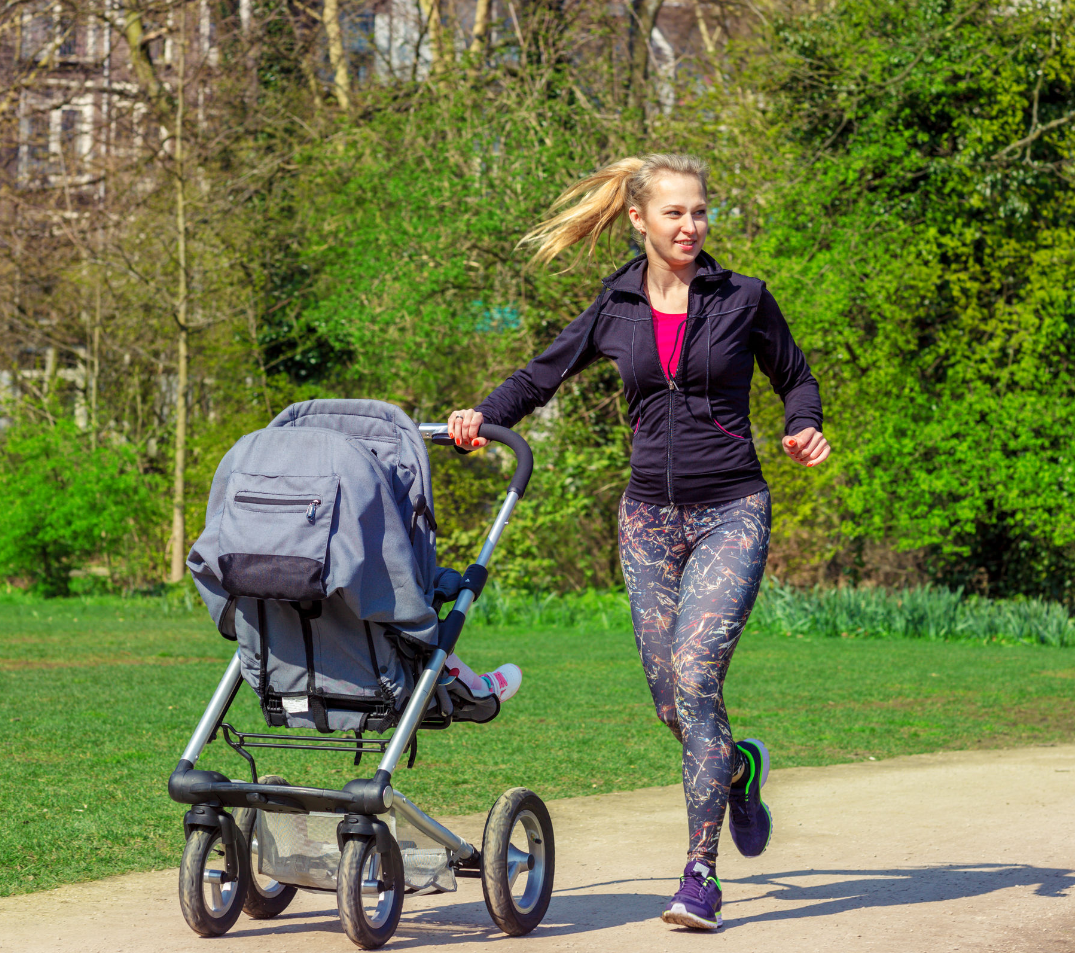If you were a runner, or avid exerciser, prior to pregnancy, it can be tempting to quickly get back into this type of activity in the postpartum period. While incorporating a wide variety of movements into your workouts is certainly beneficial, rushing back to high-impact activities — like running and jumping — before your body has been prepared to handle the stress of impact, can set you up for a potential injury and pelvic floor issues.
In this post, we’ll give you a step-by-step plan to gradually prepare your body to safely manage impact stresses. Please note that this process does take some time, but it is the safest and most effective way to get back to running pain-free and leak-free.
Step 1: Do Core Recovery Work
Prior to resuming impact, it is essential to go through core recovery work to restore strength to the traumatized tissues of your deep core, especially your pelvic floor muscles, which must be able to tolerate the added stress of impact. To get started, checkout these highly beneficial postpartum core recovery exercises. You can also go through our entire 8-week core recovery program, which helps you rebuild your core from the inside out in just 5 – 8 minutes per day. Finally, working with a physical therapist who specializes in women’s health can be a great option. You can use this PT Locator provided by APTA (American Physical Therapy Association) Pelvic Health to find a qualified women’s health physical therapist near you.
Step 2: Build Lower Body Strength
After completing your core recovery work, the next step is to build strength so that your soft tissues — muscles, fascia, tendons, etc. — can act as effective “shock absorbers” during impact. Just as a car has shock absorbers to dampen the effects of bumps on the road in order to protect the car and offer a smooth ride to passengers, you must build your body’s suspension system to dampen impact forces so that they don’t jar your joints and cause injury over time.
The first step to building your body’s suspension system is to build lower body strength. It’s advisable to start with double-leg moves like squats, ground pickups (deadlifts), and bridges. Then, incorporate single-leg moves, as these require more strength, control, and balance. For some great single-leg strength training exercises, see these 5 moves to build lower body stability.
Finally, for a complete (total body) strength training program, explore our 16-Week Postpartum Training Program. This program takes you through our complete core recovery program mentioned above, then helps you safely and effectively build strength (including the lower body strength necessary for impact).
Step 3: Introduce Speed
Once you have built your movement repertoire of fundamental lower-body moves, then you need to speed them up since jumps, hops, leaps, jumping rope, and running are all higher-velocity activities. This is often the step that most people miss, yet it is the most critical step for preparing the tissues to handle impact and protecting your pelvic floor.
Here is a 3-part progression to introduce speed using a basic squat that you mastered in step 2. Click on the links to watch a video demo of each.
- Slow Down, Fast Up: Lower down into your squat slowly, then practice shooting upward to increase speed on the ascent.
- Fast Down, Slow Up: This time, go fast on the way down (more challenging on the suspension system), and stand up slowly.
- Fast Down, Fast Up: Now, put these together to go fast in both directions.
Make sure to master each move in numerical order — with no pain or leaking (urinary or fecal) — before progressing to the next move.
Step 4: Introduce Impact
Now that your “suspension system” is in place from doing recovery work, building strength, and adding speed — you can begin to introduce impact. To do this in a safe and effective way, start slowly with just single jumps, then work towards consecutive jumps. Watch the 2-part progression below
- Squat Jumps-Single: Begin with just single jumps and focus on landing quietly.
- Squat Jumps-Consecutive: Once you feel controlled with single jumps, then work towards multiple jumps in a row (landing quietly). If you have any joint pain or leaking, reduce the jump height or the amount of reps.
Signs to Stop
If, at any part of this process, you feel pain or leaking (urinary or fecal), this is a sign that your body is not quite ready for the movement you’re doing. Therefore, you may need more time in the previous step.
Want Additional Resources?
For additional resources to help you recover, build strength, and get back to doing what you love, explore our Postpartum Training Programs. Or, for a more personalized approach, visit our Find a Coach page to find an expert trainer who can design and coach you through a customized training program.
Are you a Health & Fitness Professional?
If you are a health & fitness professional interested in coaching pre & postnatal clients, explore our ProNatal Education & Certification.
